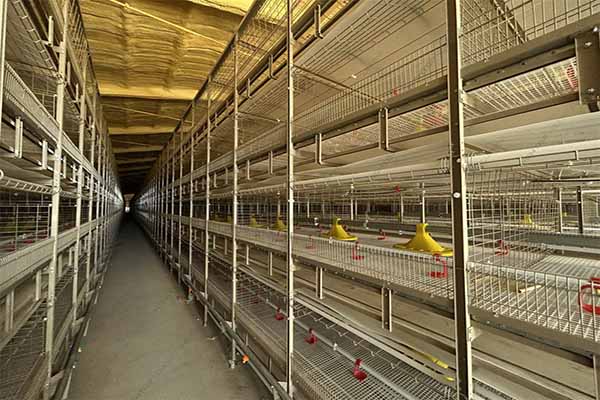How to Reduce Mortality in Tanzania Chicken Farms: A Professional Guide
Time : 2025-07-01
The poultry industry in Tanzania has experienced significant growth over the past decade. With the rise in demand for poultry products, the mortality rate in chicken farms has also increased. This has led to financial losses for farmers and a reduction in the quality of meat production. In this article, we will explore some practical ways to reduce mortality in Tanzania chicken farms using professional poultry equipment knowledge.
1. Introduction to Chicken Farming in Tanzania
Chicken farming is a vital component of Tanzania’s agriculture sector. It contributes significantly to food security, income generation, and job creation. However, the high mortality rate among chickens is a major concern for farmers and the industry as a whole. Several factors contribute to the mortality rate, including disease, poor nutrition, and poor management practices.
2. Factors Contributing to High Mortality Rates in Tanzania Chicken Farms
2.1 Disease Outbreaks
One of the leading causes of mortality in Tanzania chicken farms is disease outbreaks. Chicken pneumonia, fowl pox, Newcastle disease, and coccidiosis are common diseases that affect chicken farms in the region. Poor biosecurity measures and inadequate vaccination programs are some of the factors that exacerbate disease outbreaks.
2.2 Poor Nutrition
Proper nutrition is essential for the health and productivity of chickens. Inadequate or imbalanced diets can lead to nutritional deficiencies, resulting in weakness and increased susceptibility to diseases. Additionally, high-quality feed costs can be a concern for farmers, especially in regions where resources are scarce.
2.3 Poor Management Practices
Inadequate management practices, such as overcrowding, poor sanitation, and lack of proper ventilation, can lead to an increased risk of disease and stress, thereby contributing to the high mortality rate in Tanzania chicken farms.
3. Professional Strategies to Reduce Mortality in Tanzania Chicken Farms
3.1 Implementing Effective Biosecurity Measures
One of the most effective ways to reduce mortality rates in chicken farms is to implement strict biosecurity measures. These measures include:
– Establishing clear entry and exit points for farm personnel, visitors, and suppliers.
– Disinfecting vehicles, equipment, and people entering the farm.
– Restricting access to the farm to only those with proper training and authorization.
– Segregating sick and healthy birds to prevent cross-contamination.
3.2 Improving Nutrition
Proper nutrition is critical for maintaining the health and productivity of chickens. To improve nutrition, consider the following strategies:
– Consult with a professional poultry nutritionist to develop a balanced diet that meets the specific needs of your chickens.
– Ensure the feed is free from contaminants and pests.
– Provide fresh water at all times to keep chickens hydrated.
– Regularly monitor the weight and performance of chickens to adjust feeding programs accordingly.
3.3 Adopting Modern Poultry Equipment
The adoption of modern poultry equipment can significantly reduce the mortality rate in chicken farms. Some essential pieces of equipment include:
– Feeders and drinkers that promote even consumption and prevent waste.
– Ventilation systems to maintain a comfortable and healthy environment for chickens.
– Waterers to provide clean and fresh water at all times.
– Environmental controllers to regulate temperature, humidity, and light, thereby promoting optimal growth and reducing stress.
3.4 Disease Control and Prevention
To control and prevent diseases in chicken farms, follow these strategies:
– Implement an effective vaccination program that targets common diseases affecting chickens in Tanzania.
– Conduct regular health checks on chickens and promptly treat any signs of illness.
– Consult with a veterinarian to develop a disease management plan that suits your farm’s specific needs.
– Practice proper disposal of dead birds and waste to prevent the spread of diseases.
4. Conclusion
Reducing mortality rates in Tanzania chicken farms is essential for the growth and sustainability of the poultry industry. By implementing effective biosecurity measures, improving nutrition, adopting modern poultry equipment, and focusing on disease control and prevention, farmers can significantly lower mortality rates and enhance their farm’s productivity. It is important for farmers to continuously learn and adapt to new technologies and practices in the poultry industry to stay competitive and achieve long-term success.












